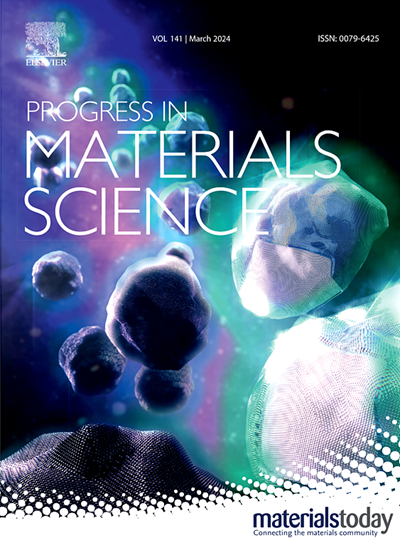Advanced Mg-based materials for energy storage: fundamental, progresses, challenges and perspectives
IF 33.6
1区 材料科学
Q1 MATERIALS SCIENCE, MULTIDISCIPLINARY
引用次数: 0
Abstract
Magnesium (Mg)-based materials exhibit higher hydrogen-storage density among solid-state hydrogen-storage materials (HSMs). Highly reliable hydrolysis can be achieved using them for hydrogen production. They can also achieve the integration of hydrogen production and storage via the regeneration. Furthermore, rechargeable magnesium batteries (RMBs), which possess desirable qualities that exhibit immense potential in addressing challenges related to lithium resource scarcity. However, limitations like high desorption temperature, poor cycle life, low hydrolysis rate, and propensity for passivation layer on Mg anodes, hinder their large-scale use as promising energy storage materials (ESMs). Herein, the review offers a comprehensive summary and analysis of the latest research in Mg-based materials for hydrogen storage, production, regeneration and RMBs. We summarize the impact of different methodologies on the thermodynamic and kinetic properties of MgH2. In particular, we thoroughly investigate the commonly used methods for enhancing the hydrolysis efficiency of Mg/MgH2. The currently research status on the regeneration of borohydrides by Mg-based materials is also summarized. In addition, the advantages and disadvantages of utilizing Mg as anode material in RMBs are also evaluated. This review aims to provide a fundamental insight of Mg-based materials and technologies and offer new strategies for promoting the sustainable development of advanced Mg-based materials.
用于储能的先进镁基材料:基础、进展、挑战与展望
在固态储氢材料(HSMs)中,镁(Mg)基材料具有更高的储氢密度。使用它们可以实现高可靠性的水解制氢。它们还可以通过再生实现制氢和储氢一体化。此外,可充电镁电池(RMB)具有理想的品质,在应对与锂资源稀缺有关的挑战方面具有巨大潜力。然而,由于解吸温度高、循环寿命短、水解率低、镁阳极易产生钝化层等限制,阻碍了它们作为前景广阔的储能材料(ESM)的大规模应用。本综述全面总结和分析了用于氢气存储、生产、再生和人民币的镁基材料的最新研究。我们总结了不同方法对 MgH2 热力学和动力学特性的影响。特别是,我们深入研究了提高 Mg/MgH2 水解效率的常用方法。我们还总结了镁基材料再生硼氢化物的研究现状。此外,还评估了在人民币中使用镁作为阳极材料的优缺点。本综述旨在提供对镁基材料和技术的基本认识,并为促进先进镁基材料的可持续发展提供新策略。
本文章由计算机程序翻译,如有差异,请以英文原文为准。
求助全文
约1分钟内获得全文
求助全文
来源期刊

Progress in Materials Science
工程技术-材料科学:综合
CiteScore
59.60
自引率
0.80%
发文量
101
审稿时长
11.4 months
期刊介绍:
Progress in Materials Science is a journal that publishes authoritative and critical reviews of recent advances in the science of materials. The focus of the journal is on the fundamental aspects of materials science, particularly those concerning microstructure and nanostructure and their relationship to properties. Emphasis is also placed on the thermodynamics, kinetics, mechanisms, and modeling of processes within materials, as well as the understanding of material properties in engineering and other applications.
The journal welcomes reviews from authors who are active leaders in the field of materials science and have a strong scientific track record. Materials of interest include metallic, ceramic, polymeric, biological, medical, and composite materials in all forms.
Manuscripts submitted to Progress in Materials Science are generally longer than those found in other research journals. While the focus is on invited reviews, interested authors may submit a proposal for consideration. Non-invited manuscripts are required to be preceded by the submission of a proposal. Authors publishing in Progress in Materials Science have the option to publish their research via subscription or open access. Open access publication requires the author or research funder to meet a publication fee (APC).
Abstracting and indexing services for Progress in Materials Science include Current Contents, Science Citation Index Expanded, Materials Science Citation Index, Chemical Abstracts, Engineering Index, INSPEC, and Scopus.
 求助内容:
求助内容: 应助结果提醒方式:
应助结果提醒方式:


